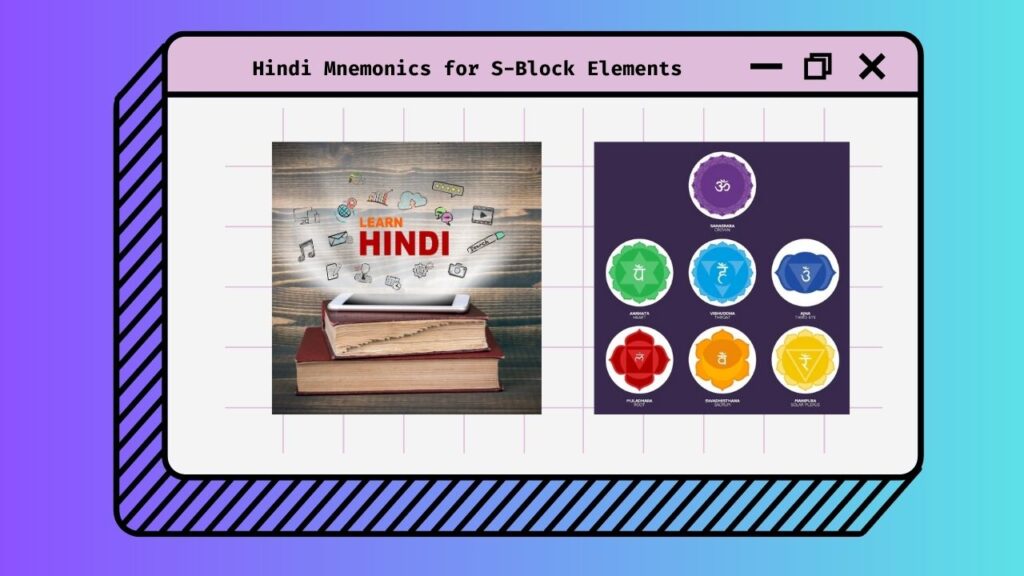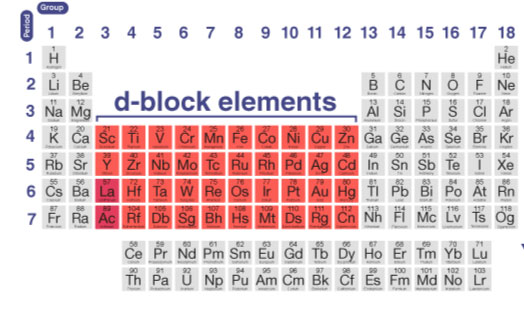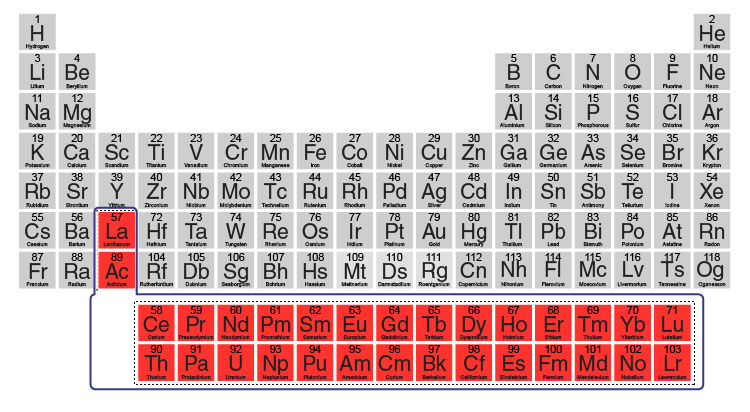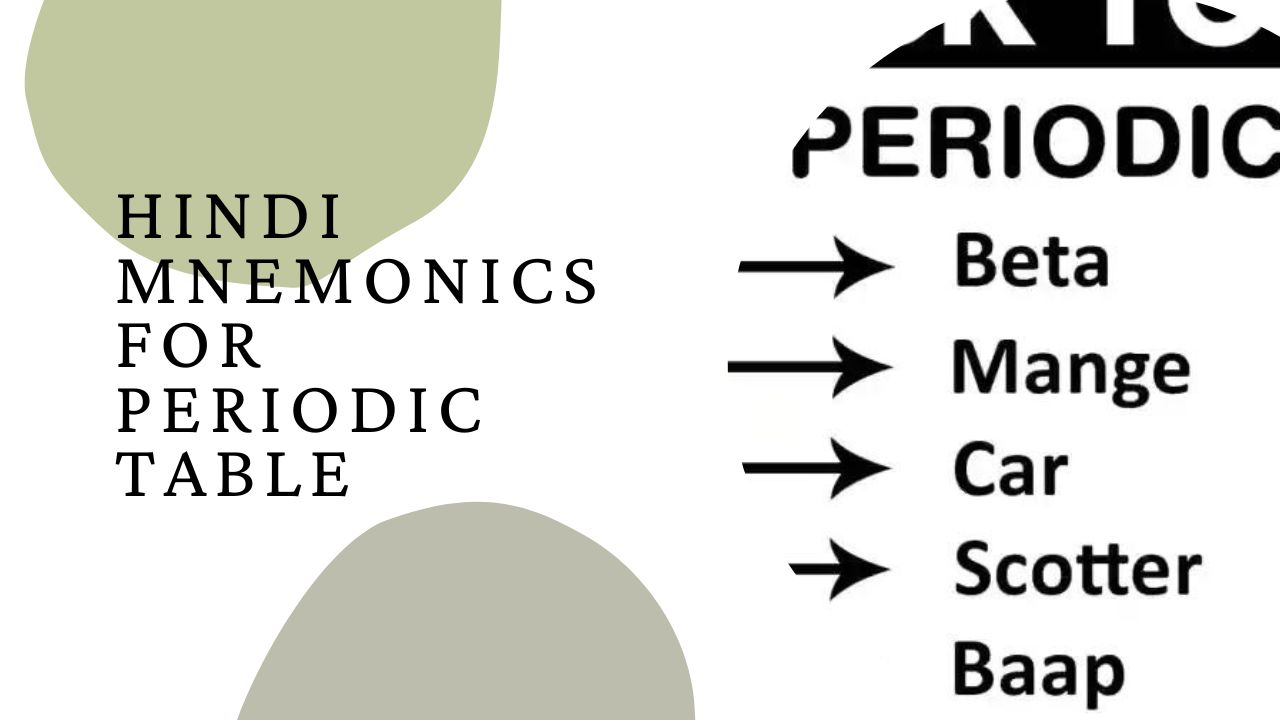As a college student majoring in the sciences, you’re already familiar with the periodic table. It’s a tool that lists all the known elements on Earth, providing their names, atomic numbers, atomic weights, and symbols. It’s instrumental in tackling various chemistry problems, but remembering the sequence and position of each element can be a daunting task.
If you have forgotten your elements, here’s how to make this learning process easier and more enjoyable. We’ll be introducing you to some humorous and fascinating Hindi mnemonics for the periodic table.
Before we start, remember these key points when reading the Hindi mnemonics:
- In mnemonics, the first bold letter in each word denotes the element symbol. Occasionally, where the complete symbol couldn’t be included, another letter of the symbol is shown in brackets. When reading the sentences, ignore the letters in brackets.
- The symbols of elements in the sentences are arranged in the same order as they occur in a group or period.
- To make the sentences easier to remember, phonetics have been used at places to denote a symbol, such as ‘c’ replaced by ‘k’, ‘g’ with ‘j’, ‘I’ with ‘ea’, and ‘o’ with ‘u’.
S-Block Elements:

S-Block elements, comprising the first two groups of the periodic table, are mostly alkaline. These groups share many physical and chemical properties, making them easier to remember.
Group 1: Alkali Metals
This group includes Lithium (Li), Sodium (Na), Potassium (K), Rubidium (Ru), Caesium (Cs), and Francium (Fr).
Hindi Mnemonic for Group 1: “LiNa Ki Ruby Cse Friendship hai.”
Group 2: Alkaline Earth Metals
Group 2 consists of Beryllium (Be), Magnesium (Mg), Calcium (Ca), Strontium (Sr), Barium (Br), and Radium (Ra).
Hindi Mnemonic for Group 2: “Beta Mange Car Scooter Baap Raazi.”
P-Block Elements:

Comprising the last six groups of the periodic table (from groups 13 to 18), P-Block elements house their valence electrons in p-orbitals. The block includes metals, metalloids, noble gases, and halogens.
Group 13 (IIIA): Boron Group
This group includes Boron (B), Aluminium (Al), Gallium (Ga), Indium (In), and Thallium (Tl).
Hindi Mnemonic for Group 13: “BAL Gangadhar In Thailand.”
Group 14 (IVA): Carbon Group
This group contains Carbon (C), Silicon (Si), Germanium (Ge), Tin (Sn), and Lead (Pb).
Hindi Mnemonic for Group 14: “Chale Shiv Ge Sang Parbati.”
Group 15 (VA): Nitrogen Group
This group includes Nitrogen (N), Phosphorus (P), Arsenic (As), Antimony (Sb), and Bismuth (Bi).
Hindi Mnemonic for Group 15: “Nana Patekar Aishwariya SaB Bindass.”
Group 16 (VIA): Chalcogens
The group includes Oxygen (O), Sulphur (S), Selenium (Se), Tellurium (Te), and Polonium (Po).
Hindi Mnemonic for Group 16: “Oh! Style Se Tel Polish.”
Group 17 (VIIA): Halogens
This group comprises Fluorine (F), Chlorine (Cl), Bromine (Br), Iodine (I), and Astatine (At).
Hindi Mnemonic for Group 17: “Fir Call kar Bahaar AayI Aunty.”
Zero Group or Group 18: Noble Gases
The group includes Helium (He), Neon (Ne), Argon (Ar), Krypton (Kr), Xenon (Xe), and Radon (Rn).
Hindi Mnemonic for Group 18: “He Never Arrived; Kara Xero Run pe out.”
D-Block Elements:

The D-Block, comprised of groups 3 to 12, represents those elements with their valence electrons in the second outermost d-orbitals. For learning purposes, we will be going period-wise and not group-wise for d-block elements.
Period 4:
This period is predominantly occupied by elements found in the earth’s crust and core, known for their stability. It includes Scandium (Sc), Titanium (Ti), Vanadium (V), Chromium (Cr), Manganese (Mn), Iron (Fe), Cobalt (Co), Nickel (Ni), Copper (Cu), and Zinc (Zn).
Hindi Mnemonic for Period 4: “Science Ti(ea)cher Vineeta Criplani Man Fenko (FeCo) NiKyun(Cu) Zaan hai?“
Period 5:
These elements often show many exceptions to the Madelung rule. They include Yttrium (Y), Zirconium (Zr), Niobium (Nb), Molybdenum (Mo), Technetium (Tc), Ruthenium (Ru), Rhodium (Rh), Palladium (Pd), Silver (Ag) and Cadmium (Cd).
Hindi Mnemonic for Period 5: “Europe G(d)aya to TB(b) aur Di(y)arrohoea Hogaya.”
Period 6:
This period encompasses the lanthanides or rare earths, including valuable elements like gold. The group includes Lutetium (Lu), Hafnium (Hf), Tantalum (Ta), Tungsten (W), Rhenium (Re), Osmium (Os), Iridium (Ir), Platinum (Pt), Gold (Au) and Mercury (Hg).
Hindi Mnemonic for Period 6: “L(u)a HafTa Warna Reh Us(Os) Irritating Popat ke saath Aur Hoj(g)a pagal.”
Period 7:
Exclusively made up of radioactive elements, this period includes actinides and the heaviest naturally occurring element, Californium. The group includes Actinium (Ac), Rutherfordium (Rf), Dubnium (Db), Seaborgium (Sg), Bohrium (Bh), Hassium (Hs), Meitnerium (Mt), and Darmstadtium (Ds).
Hindi Mnemonic for Period 7: “Ak(c)ele R(f) D(b) S(g)harma ki B(h)ook mein H(s)ain Maths ke Difficult sawaal.”
F-Block Elements:

Also known as the inner transition elements, F-block elements have their valence electrons in f-orbitals. They are divided into Lanthanides (also known as rare earth elements) and Actinides.
Lanthanides:
This group includes Cerium (Ce), Praseodymium (Pr), Neodymium (Nd), Promethium (Pm), Samarium (Sm), Europium (Eu), Gadolinium (Gd), Terbium (Tb), Dysprosium (Dy), Holmium (Ho), Erbium (Er), Thulium (Tm), Ytterbium (Yb) and Lutetium (Lu).
The Hindi Mnemonics for Lanthanides are divided into three parts:
Part 1: “Celina aur Priety Ne dande se Pammy aur Simmy ko mara.”
Part 2: “Europe G(d)aya to TB(b) aur Di(y)arrohoea Hogaya.”
Part 3: “E re, dekh Tamatar Yellow aur bLue hain.”
Actinides:
This group includes Thorium (Th), Protactinium (Pa), Uranium (U), Neptunium (Np), Plutonium (Pu), Americium (Am), Curium (Cm), Berkelium (Bk), Fermium (Fm), Mendelevium (Md), Nobelium (No), and Lawrencium (Lr).
The Hindi Mnemonics for Actinides are also divided into three parts:
Part 1: “Thode Pehelwan Unse Niptengey.”
Part 2: “Purane Aam K(C)am Bikenge.”
Part 3: “Itni Family aMdani mein No Ladki rajee.”
These amusing and fascinating Hindi mnemonics make learning the periodic table an enjoyable task for university students in the science stream. By using these tips, you can learn and memorise all elements of the periodic table, including their group and periods!





